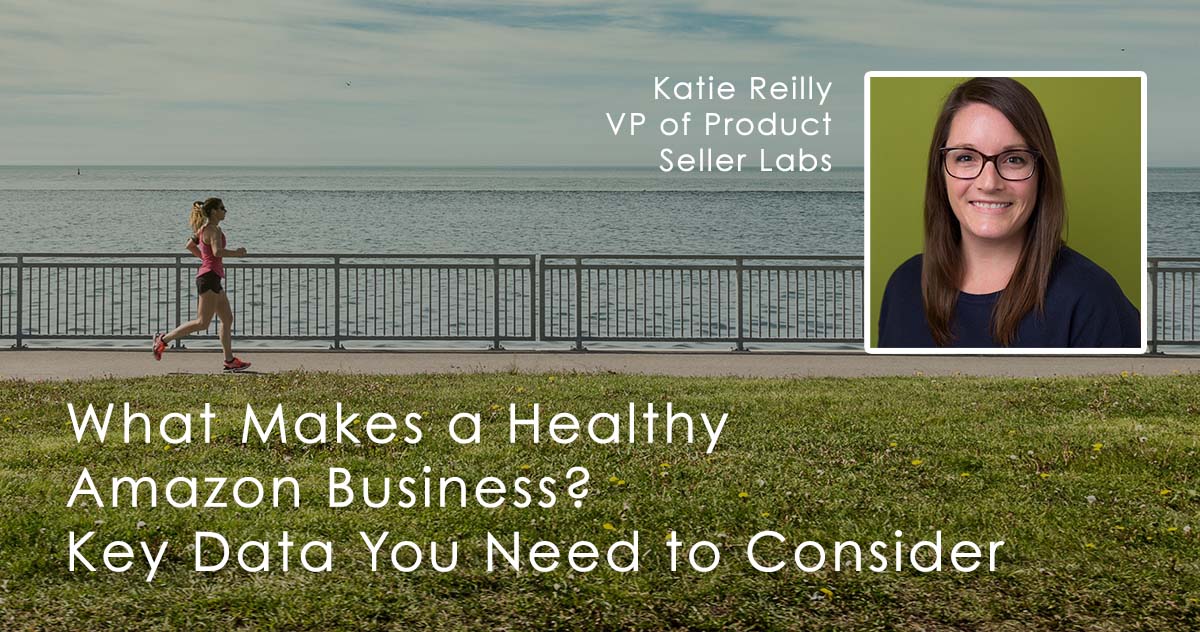What Makes a Healthy Amazon Business? Key Data You Need to Consider

Data is an important aspect of our everyday lives—especially for Amazon sellers. Learn how to use data to measure a healthy Amazon business with relevance, reputation, traffic, and profit.
Do you like numbers? I do. I love that they can tell you everything you need to know about your business and its health—about what’s working and not working and about your customers like or dislike. As the VP of Product at Seller Labs, I spend a lot of my time thinking about numbers, and mostly about how we can make numbers (data cough cough) more usable for you. Like how can we save you from going on a wild goose data chase by surfacing key insights? And how to guide your business decisions with intelligence instead of drowning your day with too many metrics?
We’ve helped a lot of sellers grow their businesses on Amazon—from the small side hustles to busy, booming brands. What I’ve learned is that each entrepreneur has a unique story, catalog, and operations. I’ve also learned there is a legitimate consensus that selling on Amazon is complex, time is precious, and we need more data to make business decisions!
Fortunately, that’s why I’m here. In my 15+ years of deciphering data and building strategies for companies, I know first hand just how frustrating and overwhelming too much data can be. But I also know that if I can put the right information in your hands, it can give you incredible insight into how to grow.
In the upcoming weeks, I’ll be publishing more insight into mastering data to grow sales on Amazon. We’ll start with a series on four key types of data that I’m researching—and that you should use to measure the health of your business.
The Measures of a Healthy Amazon Business: Relevance, Reputation, Traffic, and Profit
Whether you’re just starting out or scaling, the operational side of selling is consuming: sourcing, shipping, storage, listings, fulfillment, and satisfying customers. Whew! It’s clear why time is so precious, but a healthy business requires more than ops. Amazon’s marketplace is dynamic. To be successful you need to stay relevant, maintain a good reputation, drive traffic, and grow profit. Let’s unpack relevance today.
Metric #1: Stay Relevant
What is relevance? It’s a term fairly specific to Amazon products, but you should think of this as building awareness for your product in the population of shoppers looking for it. Relevance is how well the product fits the shopper’s need.
When a product is relevant, it meets the expectation and intent of a shopper. The more relevant to the shopper’s intent, the more successful a product will be, and this will manifest in more than orders. Seller feedback, product reviews, and of course returns, will have markedly better metrics.
A product’s relevance can be broken down into the keywords and search terms a shopper uses to find or describe a product like yours. Like in the:
- Title
- Backend metadata
- Bullet points
- Product description
- Photos
Since search is the primary method shoppers use to discover products on Amazon, it’s imperative that your products match the shopper’s expectations and intent as much as possible.
Since I keep my attention on market trends, I know that there are industry benchmarks and metrics associated with your product’s relevance that greatly impact where you show up in results. But the problem for most sellers is that this isn’t obvious. Unless you spend your time thinking about the market as a whole, you really don’t have insight into what a small increase to your product rating could do for your seller score, for example.
So I’m keenly aware that we can help you to discover what those benchmarks are, and what you can do to affect them. You should consider Amazon product relevance as the start to mastering data in your business decision-making.
In the next in this series, I’ll focus on traffic and performance.
Metric #2: Traffic and Performance
Performance is how Amazon ranks products by potential profitability using key performance indicators to determine its placement in a results page. These aspects of your product listing go beyond the obvious things you can influence. These include things like:
- Sales velocity
- Sales history
- Inventory levels
- Price
- Detail page sessions/conversions
- Seller feedback score
- Product reviews
- Sponsored Brands Advertising
How your products get traction on Amazon is dependent on mutually conflicting or dependent conditions. Meaning that in order for your products to get traffic they first need to perform, but they can’t perform unless there is traffic.
The hockey stick growth in Amazon advertising spending in recent years is a direct reflection of sellers trying to solve their traffic and performance problems.
Metric #3: Sales
Your sales velocity and history are two of the most important factors to your success on Amazon. But don’t get too caught up in sales figures because they are not your business’ ultimate goal—they are the means by which you reach your ultimate goal. More on that later.
Amazon uses a product’s sales velocity and history to determine its relevance in search. The more a product sells compared to its competition shows Amazon that it’s more relevant. And Amazon wants more sales—so naturally, it will rank a better selling product over another.
A product’s sales history is akin to the foundation of a building. The more sales a product has, the stronger its staying power. But a product can’t rely on its sales history alone to propel it above its competition. A robust sales history can’t boost a product’s relevance it sales velocity starts to diminish.
Metric #4: Profit
Profit is your ultimate goal. It’s why you do business. Sales should be used as a metric to help show your profitability as a business. You could be selling 100 widgets a day at $100 a piece but if it costs $99 to create the widget then you’re not very profitable. This is an example of how your sales data can skew the reality of your company’s profitability.
Next Steps
Moving forward, I’ll talk about how to use data to impact the relevance, traffic and performance, sales, and profit of your brand on Amazon. I will show you how to find the right data, surface your raw data, and make your data understandable and actionable.
I’ll be breaking down the whys, hows, whats and when associated with coupling your goals and data to grow your business.

Lauren is our tech Product Manager at Seller Labs. Our Chief Problem Solver. In her free time, when she's not taking care of our customers needs, she's enjoying the great outdoors - gardening and gathering fresh eggs from her 7 chickens!






